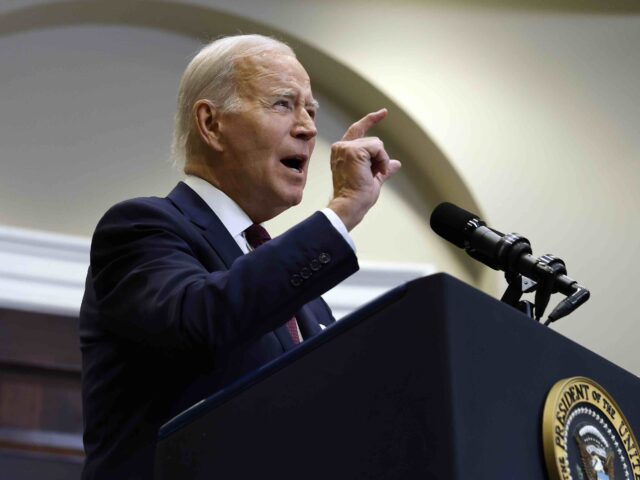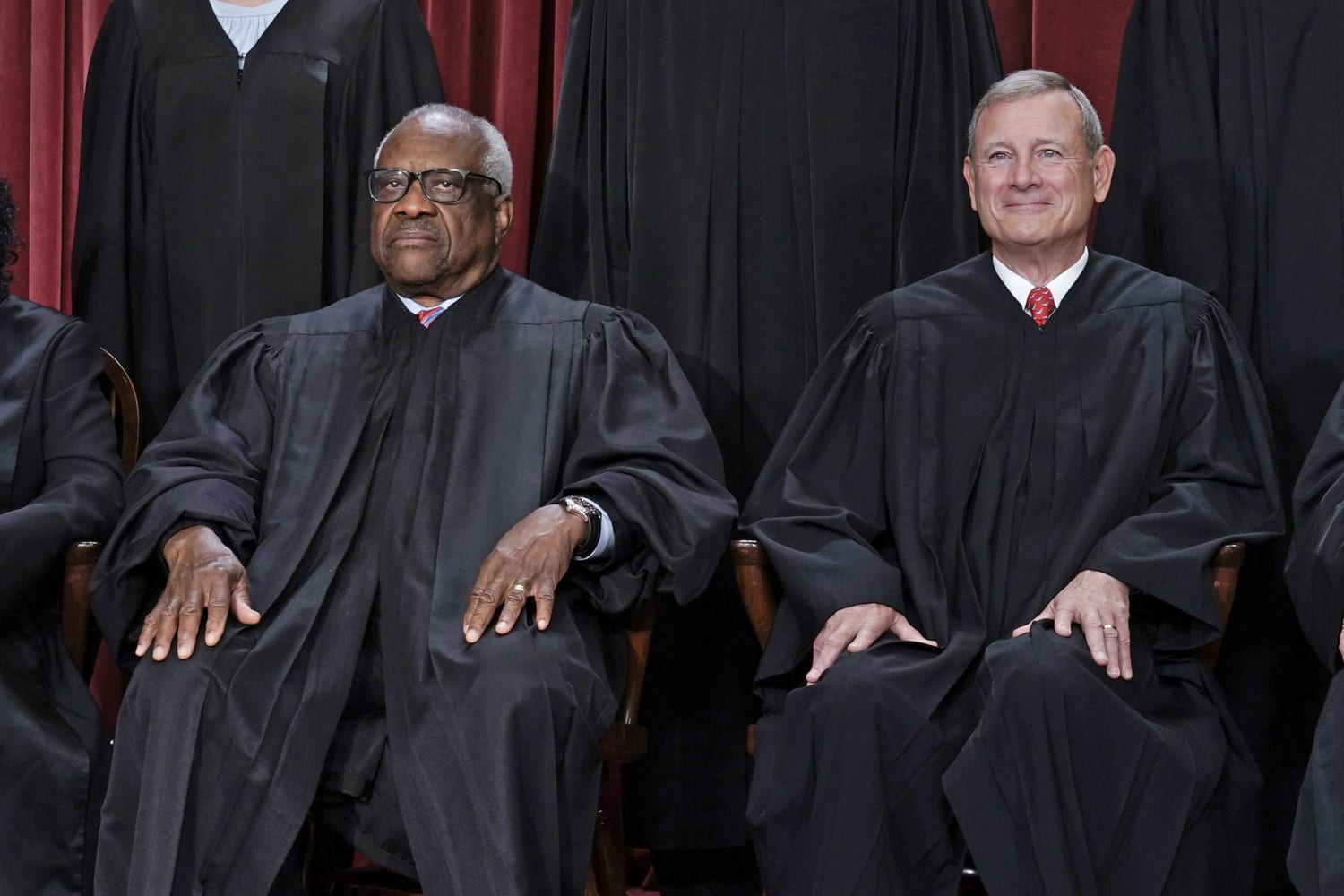Racial preferences in college admissions violate the Equal Protection Clause of the Constitution, the Supreme Court decided yesterday in a historic decision with profound implications for racial preferences in many areas of law and public policy.
In doing so, the Court defended the American dream.
While the Supreme Court struck down the Left's most favored tool, President Biden slammed his fist on the lectern, yelling, "This is not normal."
What should "normal" look like? Would he know "normal" if he looked into its face?
Be informed, not misled.
The Supreme Court defended the American dream with its ruling on Affirmative Action.
The Equal Protection Clause of the Fourteenth Amendment commands that no state shall “deny to any person within its jurisdiction the equal protection of the laws.” The Supreme Court has always acknowledged that the central promise of the Equal Protection Clause is to forbid laws and public policies that discriminate on the basis of race.
Affirmative Action discriminates. And it devalues minorities in the name of "helping" them.
The majority opinion declared yesterday that “the Harvard and UNC admissions programs cannot be reconciled with the guarantees of the Equal Protection Clause.”
The Supreme Court Majority opinion says this:
The Constitution deals with substance, not shadows, and the prohibition against racial discrimination is leveled at the thing, not the name. A benefit to a student who overcame racial discrimination, for example, must be tied to that student’s courage and determination. Or a benefit to a student whose heritage or culture motivated him or her to assume a leadership role or attain a particular goal must be tied to that student’s unique ability to contribute to the university. In other words, the student must be treated based on his or her experiences as an individual – not on the basis of race.
Many universities have for far too long done just the opposite. And in doing so, they have concluded, wrongly, that the touchstone of an individual’s identity is not challenges bested, skills built, or lessons learned but the color of their skin. Our constitutional history does not tolerate that choice.
President Biden cannot handle true progress.
President Biden slammed the U.S. Supreme Court for its decision striking down racial preferences in college admissions on Thursday, declaring in the White House: “This is not a normal court.”
Biden scheduled a press event to react to the decision in Students for Fair Admissions v. President and Fellows of Harvard College, in which a group representing Asian-American students sued Harvard and the University of North Carolina over their affirmative action programs. The court struck down racial preferences in college admissions that could not meet the “strict scrutiny” standards of the Constitution’s Fourteenth Amendment.
Biden pounded the lectern and vowed to continue fighting for what he described as America’s core values.
As he finished his remarks and began to leave the lectern, a journalist asked whether the current Supreme Court was a “rogue” court. Biden said: “This is not a normal court.” He did not respond to a follow-up question from the same journalist asking about the idea of imposing term limits on Supreme Court justices.
White House Press Secretary Karine Jean-Pierre later told reporters aboard Air Force One to New York that the Department of Justice would join the Department of Education in advising colleges about lawful ways to advance diversity in admissions.
Apparently, the president plans to discover ways to circumvent the Supreme Court.
She said the White House would also host a summit on the issue.
Justice Clarence Thomas turned on the light and put it all in perspective.
After a brief overview of America's history, Thomas shares his optimism that America will continue to become a better place, all while excoriating the left's "equity" agenda.
"The solution to our Nation’s racial problems thus cannot come from policies grounded in affirmative action or some other conception of equity," Thomas writes. "Racialism simply cannot be undone by different or more racialism. Instead, the solution announced in the second founding is incorporated in our Constitution: that we are all equal, and should be treated equally before the law without regard to our race," he adds. "Only that promise can allow us to look past our differing skin colors."
Elsewhere in his concurring opinion, Thomas lays bare the left's flawed — and quite racist — beliefs about different races.
"In fact, all racial categories are little more than stereotypes, suggesting that immutable characteristics somehow conclusively determine a person’s ideology, beliefs, and abilities. Of course, that is false," Thomas notes. "Members of the same race do not all share the exact same experiences and viewpoints; far from it," he explains. "A black person from rural Alabama surely has different experiences than a black person from Manhattan or a black first-generation immigrant from Nigeria, in the same way that a white person from rural Vermont has a different perspective than a white person from Houston, Texas."
Despite this obvious reality, Thomas reminds us that "universities’ racial policies suggest that racial identity 'alone constitutes the being of the race or the man.'"
"That is the same naked racism upon which segregation itself was built," Thomas rightly concludes. "Small wonder, then, that these policies are leading to increasing racial polarization and friction."
Thomas also refuses to hold back on his fellow justices' flawed views of affirmative action and mistaken interpretation of the Constitution in his opinion. In evaluating the argument made in a dissenting opinion filed by Justice Ketanji Brown Jackson, Thomas brings the fire:
Justice Jackson uses her broad observations about statistical relationships between race and select measures of health, wealth, and well-being to label all blacks as victims. Her desire to do so is unfathomable to me. I cannot deny the great accomplishments of black Americans, including those who succeeded despite long odds.
Nor do Justice Jackson's statistics regarding a correlation between levels of health, wealth, and well-being between selected racial groups prove anything. Of course, none of those statistics are capable of drawing a direct causal link between race—rather than socioeconomic status or any other factor—and individual outcomes. So Justice Jackson supplies the link herself: the legacy of slavery and the nature of inherited wealth. This, she claims, locks blacks into a seemingly perpetual inferior caste. Such a view is irrational; it is an insult to individual achievement and cancerous to young minds seeking to push through barriers, rather than consign themselves to permanent victimhood.
"Justice Jackson’s race-infused worldview falls flat at each step," Thomas declares. "Individuals are the sum of their unique experiences, challenges, and accomplishments. What matters is not the barriers they face, but how they choose to confront them," he notes. "And their race is not to blame for everything—good or bad—that happens in their lives. A contrary, myopic worldview based on individuals’ skin color to the total exclusion of their personal choices is nothing short of racial determinism," Thomas adds.
Clocking in at 58 pages, Justice Thomas' concurring opinion begins on page 49 in the opinion linked above.
It ends with a straightforward three-paragraph conclusion:
The great failure of this country was slavery and its progeny. And, the tragic failure of this Court was its misinterpretation of the Reconstruction Amendments, as Justice Harlan predicted in Plessy. We should not repeat this mistake merely because we think, as our predecessors thought, that the present arrangements are superior to the Constitution.
The Court’s opinion rightly makes clear that Grutter is, for all intents and purposes, overruled. And, it sees the universities’ admissions policies for what they are: rudderless, race-based preferences designed to ensure a particular racial mix in their entering classes. Those policies fly in the face of our colorblind Constitution and our Nation’s equality ideal. In short, they are plainly—and boldly—unconstitutional. See Brown II, 349 U. S., at 298 (noting that the Brown case one year earlier had “declare[d] the fundamental principle that racial discrimination in public education is unconstitutional”).
While I am painfully aware of the social and economic ravages which have befallen my race and all who suffer discrimination, I hold out enduring hope that this country will live up to its principles so clearly enunciated in the Declaration of Independence and the Constitution of the United States: that all men are created equal, are equal citizens, and must be treated equally before the law.
Be Informed. Be Discerning. Be Vigilant. Be Hopeful. Be Prayerful.




